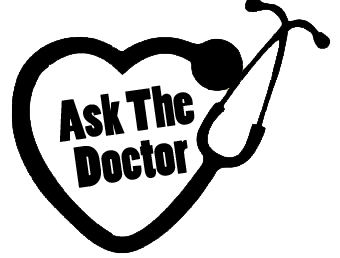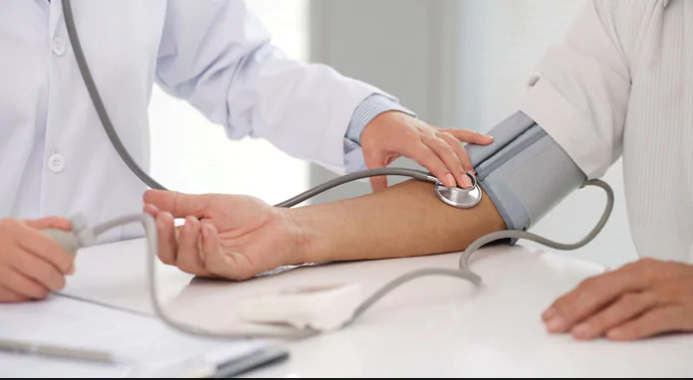- Osteoarthritis 2. Rheumatoid arthritis 3. Fibromyalgia 4. Gout
5. Cervical Spondylosis or Arthritis of the Neck
Fibromyalgia is a disorder that causes tenderness, pain, mood changes, and fatigue in the muscles of certain body parts, including the shoulders, neck, back, arms, legs, and hips. However, it is neither life-threatening nor does it damage the muscles or joints.

SYMPTOMS
1. Pain: Sharp, burning or throbbing pain may be experienced during the mornings
2. Insomnia or Upset sleep: The patients complain about upset sleep or insomnia. Patients often say that they have not slept well for months.
3. Fatigue: Muscle or mental fatigue ranges from mild to draining
4. Irritable Bowel Syndrome: More than 50% of patients complain about having constipation, diarrhea, and other gastrointestinal problems.
5. Headaches: About 50% of patients complain from headaches. Stress, tension may trigger or it may even be chronic. Minute things as smells or a change in weather may trigger it.
6. Disturbance in Mood: being irritable and depressed is another sign.
7. Tingling or numbness in areas: there is tingling sensation or numbness in the painful areas.
8. Swelling in the Joint: As like other arthritis symptoms, patients have a similar problem and complain not being able to walk some days.
Dr. Mathur at Sanjeevani Kaya Shodhan Sansthan SKSS says that different aspects in combination may be the cause for the disease development. These factors can contribute to symptoms like fatigue, generalized pain, and disturbed sleep. The factors include:
• An infectious illness
• Physical Trauma: Including A Road Traffic Accident, Or Post-Traumatic Stress Disorder (Ptsd)
• Emotional Trauma
• Lack of Understanding From Others
• Hormonal Changes
• Genetic Factors
• Condition Is Twice As Common In Women than In Men
• Being Obese
• Fibromyalgia can interfere with a person’s daily life and create difficulties for them at home or work
• Lack of sleep, emotional support, and chronic pain can cause depression and anxiety
How to determine fibromyalgia?
There are no diagnostic tests available to determine fibromyalgia. It shares its symptoms with underactive hypothyroidism deficiency of Vitamin B12 and Vitamin D.
a) WPI Score or Widespread pain index marks 19 areas in the body that would incur pain due to fibromyalgia. The score collects point for each area affected.
b) SS Score or Symptom Severity Score
In the Symptom Severity score the following symptoms are ranked on a scale from 0 to 3:
• Fatigue
• Cognitive symptoms
• Waking unrefreshed
• Physical symptoms include weakness, headache, dizziness, bowel problems, tingling/ numbness, and hair loss
c) Whether the symptoms have persisted beyond 3 months
d) The symptoms including pain are not defined by any other health issue
Who’s all can get affected?
As per Times of India, about 3% to 6% of the world’s population suffers from Fibromyalgia. It is most common between the age group of 40 to 75. It can potentially affect women, children, and men alike. Amongst children, adolescent females are more likely to develop fibromyalgia. Those suffering from other types of rheumatic diseases as lupus or rheumatoid arthritis are at risk of developing fibromyalgia. About 20% to 30% of patients of rheumatoid arthritis can also get fibromyalgia. Overweight and inactive women are at a greater threat of getting fibromyalgia.
Often more than one family member can get fibromyalgia. HLAs or Human leukocyte antigens are genetic markers that link to fibromyalgia. This means that a gene may exist that can develop fibromyalgia in a person.
How Naturopathy or natural remedies can help a patient find relief from fibromyalgia symptoms:
Dr. Mathur feels that a balanced approach towards fibromyalgia would help in its cure. He further adds that additional support alternative treatment as Naturopathic treatment besides regular medication can enable a person to deal with stress, fatigue, pain, and other symptoms.
Adding supplements with complementary lifestyle changes would help patients be more energetic, give better sleep and feel and get less pain. The meditation classes along with yoga help the patients achieve the balance as the naturopathic treatment detoxify the body to work, receive and operate at its optimum level.
Besides taking regular medicine, Naturopaths try to compensate for the deficiency of minerals with the specially designed food plan. The body gets regularized with the naturopathic treatment routine with a proper schedule for the following activities:
• Waking
• Sleeping
• Eating
• Resting
• Treatment
• Meditation
• Yoga
• Acupressure
• gym
• Physiotherapy (separate facility from the regular plan)
1. Sleep
Rest is important for a patient suffering from fibromyalgia. It helps to fight fatigue that comes with the problem.
Also, one gets educated on how to treat their mind body and cultivate the inner strength to fight the disease with unwanted symptoms as fatigue and pain.
To ensure good night rest, the following steps need to be taken:
• Minimize the daytime naps
• Minimizing noise and light
• Going to bed at the same time and waking at the same time
• Keeping a 2 to 3-hour food interval between meals
• Avoiding the TV and other screen time before going to bed
• Avoiding coffee or alcohol before going to bed
- Exercise:
Exercising helps in fighting pain, stiffness, fatigue, and discomfort as muscle strength increases. Exercise may be difficult at first but may be built up over time.
You can enjoy aerobic exercises here at Sanjeevani-Gohana as swimming, cycling or walking, or even the gym. These exercises including Yoga have helped the patients drastically. Consult a doctor for a suitable plan before you begin. It can reverse the brain activity that happens during fibromyalgia in people who exercise.
- Rest
Rest is essential as people with fibromyalgia tire out faster. When you exercise, make it moderate as too much activity may tire you out. Do not overdo if you feel fit as you may prolong the days when you won’t.
- Reducing stress
Many patients have reported that stress contributes to worsening their situation. At Sanjeevani-Gohana, we help patients to manage stress through Yoga and meditation classes. These exercises along with deep breathing techniques can help the patients fight stress.
The social atmosphere further contributes to the healing process. They form an unofficial social group with other patients which to helps to leave stress behind. Patients are advised to keep in touch with friends and family as much as possible when they return home.
- Diet and supplements
Balanced diets are prescribed for patients with and vitamin and mineral rich food for their condition. A diet plan is provided to patients when they leave the treatment. The diet plan usually includes eating a healthy and balanced diet, lessening caffeine, exercising, lessening or totally getting off nicotine and alcohol products and other substance use. Many people after the program do not feel the urge to smoke or drink as they get accustomed to the healthy way of living.
The doctors ensure that diet includes:
• vitamin D
• soy
• magnesium
• S-adenosyl-L-methionine (SAMe): is naturally found in the body. It helps maintain cell membranes and regulate hormones. It is as effective as NSAID painkillers like ibuprofen and combiflam.
• Creatine is naturally produced by the liver. Non-vegetarians can obtain from fish and meat and vegetarians and vegans can obtain from supplements.
• Topical products as Capsaicin (found in chili peppers that makes it hot)
- Flotation and spa therapy
Flotation therapy helps improve the sense of wellbeing in a patient. Many patients enjoy the therapy in the swimming pool provided by Sanjeevani Gohana. It helps reduce muscle pain, tension, sadness, and stress. Flotation helps enhance the feeling of wellbeing ease of movement, energy, and quality of sleep.
The participants reported significant temporary reductions in pain, muscle tension, stress, anxiety, and sadness. They also noted significant increases in relaxation, feelings of well-being, energy, ease of movement, and quality of sleep.
- Acupressure
We at Sanjeevani Gohana provide acupressure sessions to patients. It is important that you mention the trigger points or tender points to the doctor. A gentle tap or pressure can cause pain at these trigger points.
• Back of the Head.
• Upper Chest.
• Knees.
• Outer Elbows.
• Top of Shoulders.
• Hips
In fibromyalgia, the acupressure points to relieve the pain, especially after Post-Traumatic Stress Disorder includes:
• Pericardium 6
• Yintang
• Stomach 36 (ST 36)
• Ren 17
• Ear Shen Men
- Massage
Since ancient times massage has been considered as a good treatment for sore muscles and joints. With gentle manipulation of the body, the range of motion can be increased. It reduces stress and depression, relieves pain and enhances relaxation.
Other treatments can include Transcranial magnetic stimulation, Biofeedback therapy, Acupuncture.
Know More: How Acupressure can Help in Fibromyalgia

Sanjeevani Kaya Shodhan Sansthan Goes
online for bookings!
You can now make online payments to make reservations
and book your treatment-stay at Sanjeevani Kaya Shodhan Sansthan

If you have any concerns or queries regarding diseases treated or therapies or your special situation, write your post at Ask The Doctor section
 +91-8607000895
+91-8607000895  Whatsapp
Whatsapp


